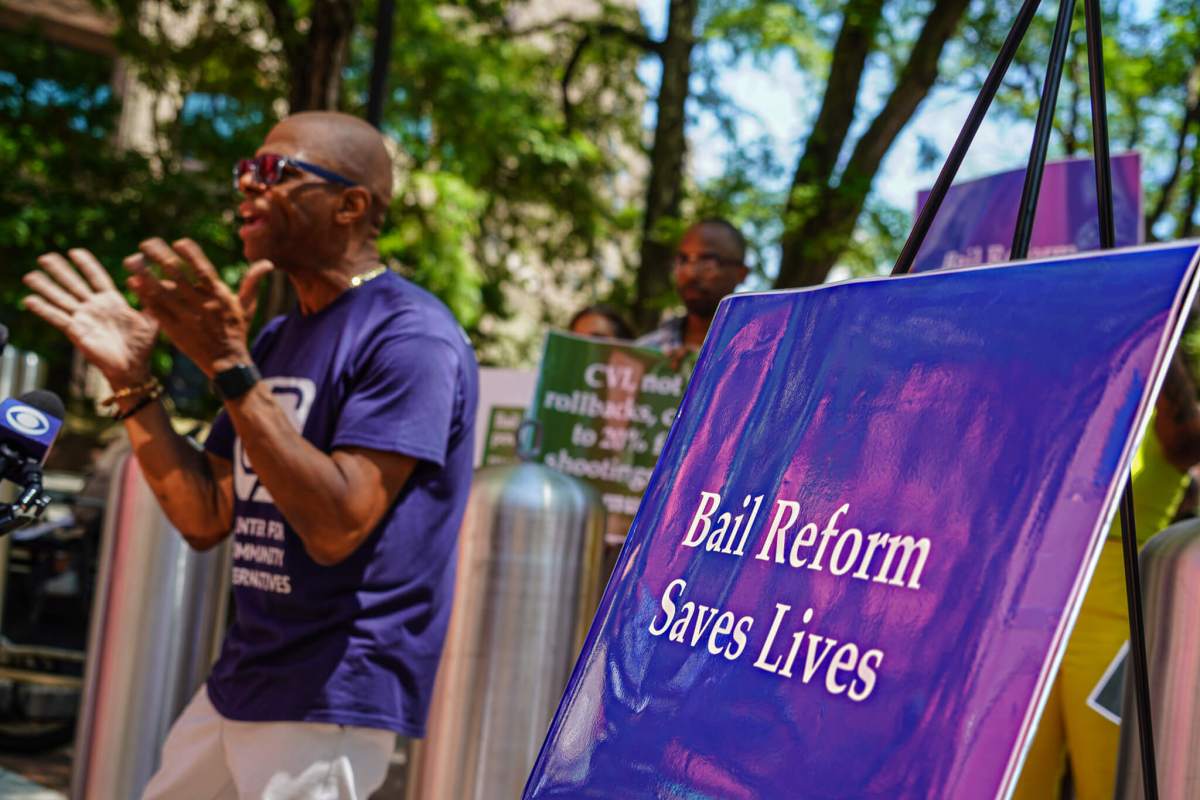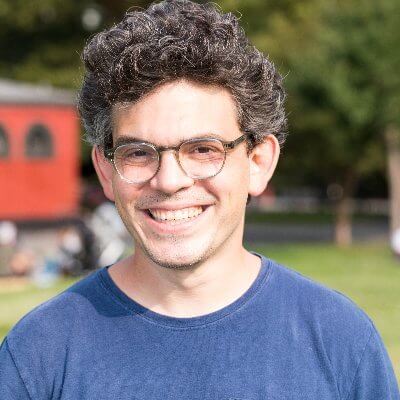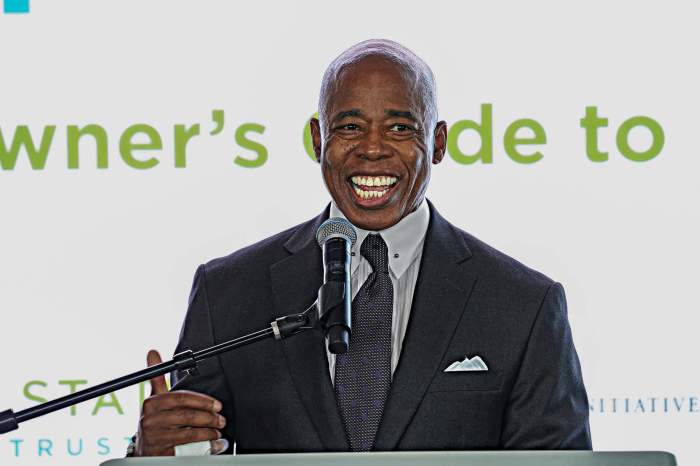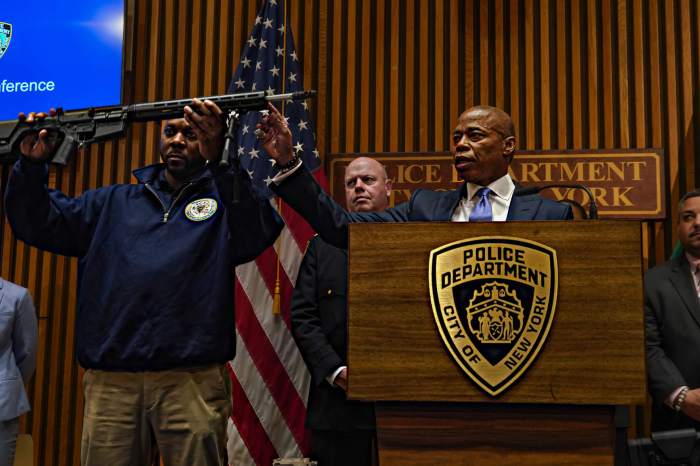Mayor Eric Adams and NYPD officials traded verbal jabs with advocates Wednesday over bail reform.
The mayor joined Police Commissioner Keechant Sewell at One Police Plaza on Aug. 3 to make a damning charge against repeat criminal offenders. Adams cited everyday New Yorkers as being the victims sandwiched between an ongoing contentious debate surrounding bail reform.
On one side the formerly incarcerated and advocate organizations are singing the praises of bail reform, while on the other side the mayor believes there are a certain few who are exploiting loopholes to constantly return to the streets to commit more crimes.
“This is not an attack on righteous reforms. This is an attack on those exploiting those reforms,” Adams said. “So, leave what’s in place for 90% of the people, those first-time offenders made a bad mistake I know – I’ve known people who have made bad mistakes as a child, I’ve made bad mistakes. Now let’s zero in on those ten percenters that have made up their mind they are going to be repeat offenders. That’s all we are saying.”

The mayor unleashed a barrage of statistics to back up his push for change. According to hizzoner, arrests have increased by 24% for a total of 109,000 arrests by Aug. 1 for the year, as compared to 87,794 arrests made during the same time period in 2021. Additionally, arrests for seven major felonies are up by approximately 29%, firearm arrests are at a 27 year high, and the NYPD has taken over 4,300 illegal guns by the end of July.
In doing so, the number of murders and shooting are also down — but the city, Adams argued, is being crippled with property crimes that have skyrocketed, along with recidivism rates.
According to Adams and the NYPD, in 2022, 25% of 1,494 people arrested for burglary committed another felony within 60 days; however, in 2017 just 7.7% went on to commit another crime. For grand larceny in 2022 the 60-day recidivism rate was 16.8%, compared to 6.5% in 2017.
“They say the definition of insanity is to do the same thing repeatedly but expect different results. Our criminal justice system is insane,” the mayor added. “It is dangerous, it is harmful and it’s destroying the fabric of our city.”
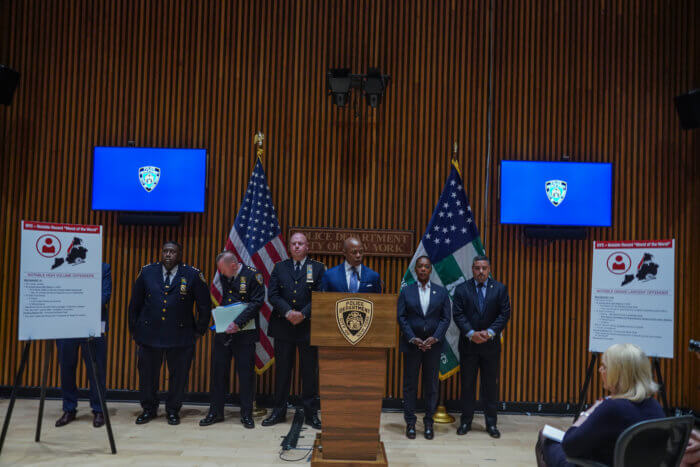
Chief Michael Lipetri drove this home further by pointing out select recidivists who have been cuffed a staggering number of times. Neither he nor the NYPD released their identities.
LiPetri said one man has a criminal history dating back to 2002 with 71 arrests, yet is still on the street today. He is also pointed to another person with over 100 arrests and is again free.
Recidivism is also tied to shootings, according to the chief, who noted that since 2020, 716 individuals are responsible for approximately 30% of all shooting incidents.
Others on the NYPD’s ‘worst of the worst’ list include:
- A high-volume offender with 101 career arrests – 88 of which have occurred since 2020.
- A repeat offender arrested 57 times since 2020 – with 23 of those arrests for burglary. The individual is currently free on parole.
- A recidivist with 87 arrests, 25 of them since 2020, and 9 of those involving a robbery charge. This individual is also free on the city’s streets at this time.
- An individual with 48 career arrests, including 39 since 2020. This individual has logged 17 grand larceny arrests and has 10 open warrants.
- A recidivist currently free despite a record of 63 total arrests, including 39 since 2020. This individual has 13 arrests for grand larceny auto.
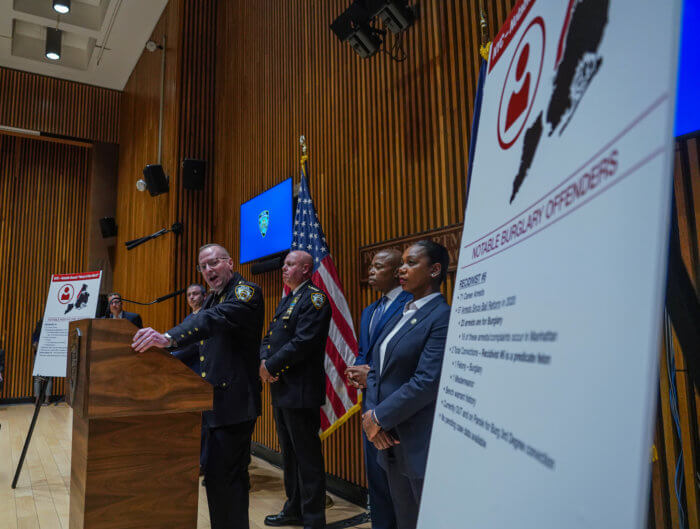
‘We ignore the right solutions’
Though the mayor and the NYPD made their case and cited their own data in calling for bail reform changes, they were met ahead of the briefing by a gathering of criminal justice advocates who charged that it was all a scare tactic designed to send the city backward.
Standing outside in the shadow of New York’s police headquarters, a slew of advocacy groups argued for what they cite as the productivity of bail reform, going so far as to accuse Mayor Eric Adams of spreading misinformation. The group endeavored to back up their assertion with their own new data.
Formerly incarcerated New Yorkers, their families, and advocates want the bail reform laws kept in tact, claiming that the current system not only works but also saves lives.
Marvin Mayfield, the director of Organizing for the Center for Community Alternatives, knows all too well what it is like to be on Rikers Island, having spent 11 months on the penal island for a crime he says he knew nothing about.
Yet Mayfield could not afford his $10,000 bail, so he languished in jail stating that he suffered abuse and was assaulted to such a severe point his leg was broken. He lost his job, car, and apartment while being incarcerated. The suffering proved too much for Mayfield and he pleaded guilty.
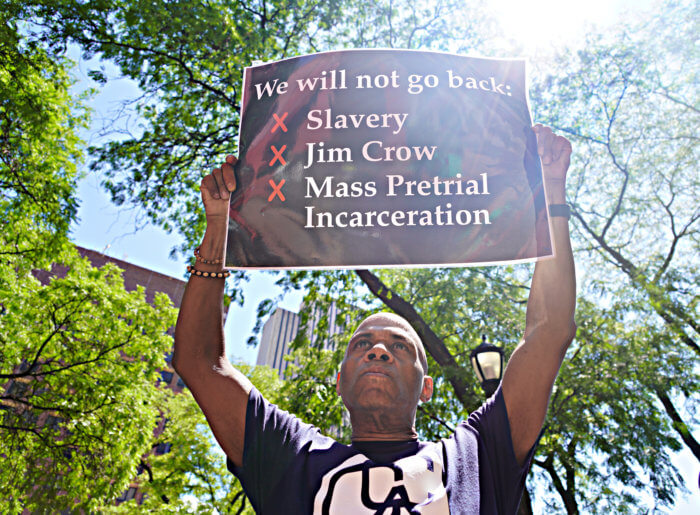
“The data is unequivocal. Bail reform has succeeded in reducing the injustices of pretrial incarceration while upholding public safety. Bail reform increased the opportunity to build safer communities. It has ensured that tens of thousands of New Yorkers were able to remain at home while awaiting trial, where they were about to keep their jobs, housing and support themselves and their children,” Mayfield said.
“By blaming the wrong causes, we ignore the right solutions,” Mayfield added.
Advocates argued that the safest communities are the ones that have the most resources, rather than the highest incarceration rates. They believe that with more money allocated to community programming and opportunities, it will uplift safety instead of proposals that undermine justice reforms.
Arielle Reid from the Legal Aid Society believes that Adams’ insistence on criticizing bail reform for crime is his way of shifting the blame from his failures to invest in the community.
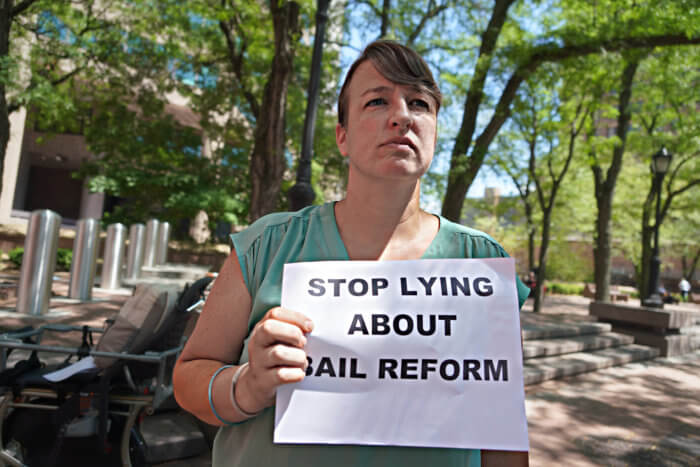
Reid explained that New York’s bail reform permits bail to be set on those who have been re-arrested on felony charges or while on probation, those who are persistent felony offenders, or re-arrested on felony or Class A misdemeanors that cause harm while being released on a prior felony, and more.
“As to what bail is designed to do, it is doing it. In New York State bail has always been meant to ensure people’s return to court and post bail reform, almost nine in ten people make it to all of their subsequent court appearances. Of the thousands of people who have been allowed to return home to their families, to their jobs and their children during the pendency of their cases, more than 95% of them are not rearrested on violent felony offenses,” Reid said.
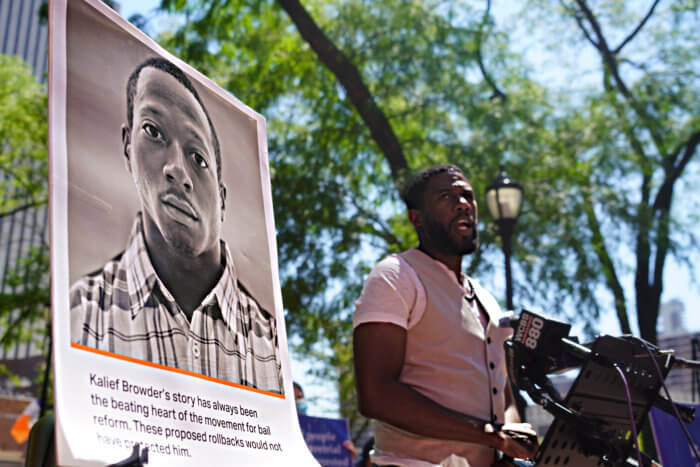
Public Advocate Jumaane Williams joined bail reform supporters outside, yet while agreeing with their cause, he also defended the mayor.
“I believe that the mayor and his administration cares about Black and Brown New Yorkers and cares about people dying,” Williams said. “But I also believe, and hope that they believe, that I and the people behind me also care about Black and Brown New Yorkers and care about them dying. This is not about who cares more, this is not about who has seen most of the horrors … So, what we can’t do is pretend that there are people who care and people who don’t. But what we can do is try to set context for the conversation that we have to have,” Williams said.



